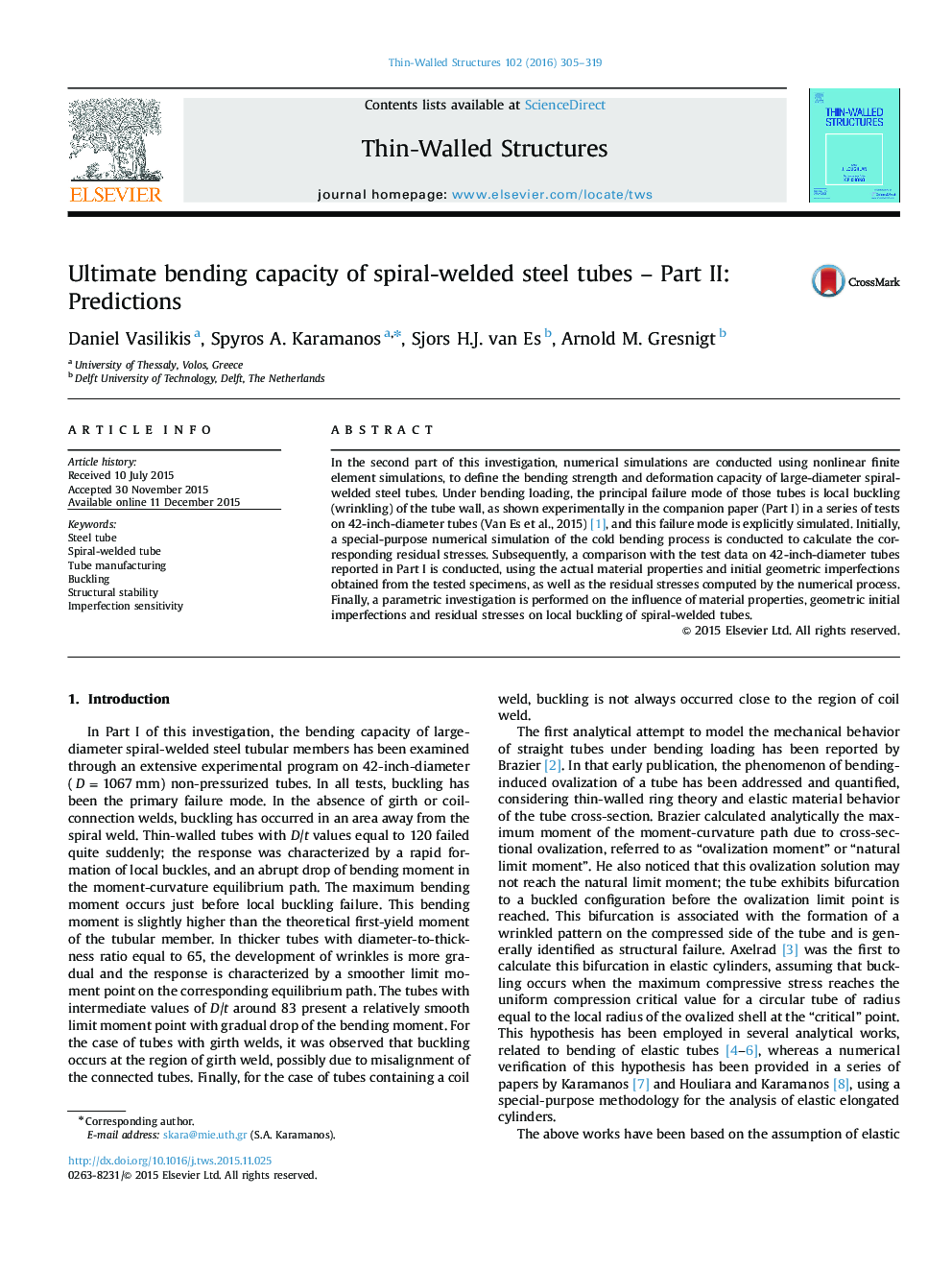| Article ID | Journal | Published Year | Pages | File Type |
|---|---|---|---|---|
| 308416 | Thin-Walled Structures | 2016 | 15 Pages |
•We simulate spiral-weld cold-forming and calculate residual stresses.•We compare the test results of part I with numerical results.•We investigate sensitivity on geometric imperfections and material properties.•We consider the effect of special features related to girth and coil welds.
In the second part of this investigation, numerical simulations are conducted using nonlinear finite element simulations, to define the bending strength and deformation capacity of large-diameter spiral-welded steel tubes. Under bending loading, the principal failure mode of those tubes is local buckling (wrinkling) of the tube wall, as shown experimentally in the companion paper (Part I) in a series of tests on 42-inch-diameter tubes (Van Es et al., 2015) [1], and this failure mode is explicitly simulated. Initially, a special-purpose numerical simulation of the cold bending process is conducted to calculate the corresponding residual stresses. Subsequently, a comparison with the test data on 42-inch-diameter tubes reported in Part I is conducted, using the actual material properties and initial geometric imperfections obtained from the tested specimens, as well as the residual stresses computed by the numerical process. Finally, a parametric investigation is performed on the influence of material properties, geometric initial imperfections and residual stresses on local buckling of spiral-welded tubes.
Graphical abstractFigure optionsDownload full-size imageDownload as PowerPoint slide
